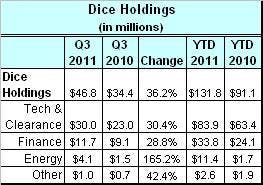A quick Internet search on the phrase “problems with performance management” returned over 21 million (!) separate entries. Dozens of pages described all the things that are wrong with performance management.
How did a process like performance management become so broken? Performance management has been around at least since the 1950s and is used by almost every company. You would think that someone would have figured out how to fix it!
The fundamental problem with performance management, along with other traditional talent management processes such as succession, development, compensation, and staffing, is that they are extremely ill defined.
3 basics of talent management
Companies designing these processes often start creating forms, tools and process maps without clearly articulating what the processes are intended to do. It is common for companies to try to accomplish multiple, conflicting objectives with a single process. The result is a process that doesn’t do anything very well, except give employees and managers something they can all complain about.
All talent management processes increase workforce productivity by doing three basic things:
- Forecasting the kinds of employees the company needs to execute its business strategies;
- Predicting employee behavior to guide staffing and job assignment decisions, and/or;
- Changing employee behavior to increase productivity and avoid unwanted turnover.
Talent processes achieve these things by creating methods that a) collect data to guide workforce decisions, b) evaluate employee performance, potential, and capabilities, c) encourage conversations between employees and managers to increase performance and retention, and/or d) support decisions related to staffing, promotion, development, and pay.
A problem with many talent management processes is that they try to accomplish too many of these different functions at once, or they over-emphasize one function to the detriment of others.
For example, succession management involves a mix of forecasting workforce needs, evaluating employee potential, developing and retaining high potential candidates, and making staffing and promotion decisions. Process steps that support one of these activities (e.g., staffing) may have little relevance to other activities (e.g., development). It is very easy to create succession processes that place lopsided emphasis on putting the right people in the right jobs vs. ensuring employees are getting the right development.
Performance management activities
No talent management process suffers from the problem of “confused and convoluted objectives” more than performance management. As illustrated by the Internet search, there is a lot of activity around fixing performance management. But these discussions usually overlook the fact that people expect performance management processes to support multiple activities that do not align well with each other. These activities include, but are not limited to:
- Coaching — Creating conversations that drive clarity around performance expectations and development opportunities. The primary goal is to increase workforce alignment and productivity. This is best done in a more informal, ongoing basis and usually does not include any form of formal performance evaluation or numerical rating.
- Performance Evaluation — Accurately assessing and rating employees based on the contributions they are making to the organization relative to their peers. The primary goal is to take accurate stock of the talent levels in the company to ensure the capabilities of the workforce will support the current and future needs of the business.
- Performance Evaluation Feedback — Letting employees know where they stand in terms of their performance and how they can influence future performance evaluations. The primary goal is to ensure employees feel they are being treated fairly and consistently and understand what is required to be successful in the company. It is worth noting that the process required to accurately evaluate performance quite different from the processes required to effectively share the evaluations with employees. In fact, the accuracy of manager ratings often improves if the ratings are not going to be shared with employees.
- Pay & Staffing Decisions — Ensuring that personnel decisions about staffing, promotions, and pay are influenced by employees’ performance levels. The primary goal is to ensure personnel decisions are done in a way that strengthens the company’s overall workforce capabilities. Employee performance is not the only factor that drives pay and pro- motion decisions, but it should be an important factor. But there are times when other factors largely eliminate relationships between employee performance and pay or promotion decisions (e.g., when there is a salary freeze).
Get the right people doing the right things
Efforts to design performance management processes benefit when companies approach these four activities as things that are inter-related but far from identical. What does not work well is trying to combine all four activities into one annual performance management event.
The problem with traditional talent management process is not the processes themselves or what they are called. The problem is that the objectives of these processes are not well defined.
What “performance management” means to a person in one company may be much different from what it means to a person in another company. For this reason, it is often better to avoid using traditional labels when talking about talent management processes.
Instead describe them using language that clearly defines what they are intended to do: get the right people doing the right things in the right way while driving the right development.
Excerpted from Elements of Successful Organizations: Achieving Strong Leadership, Smart Management, and an Engaged Workforce from the Workforce Institute at Kronos. Copyright 2011 by Kronos Incorporated. Reprinted with permission from The Workforce Institute at Kronos Incorporated.
